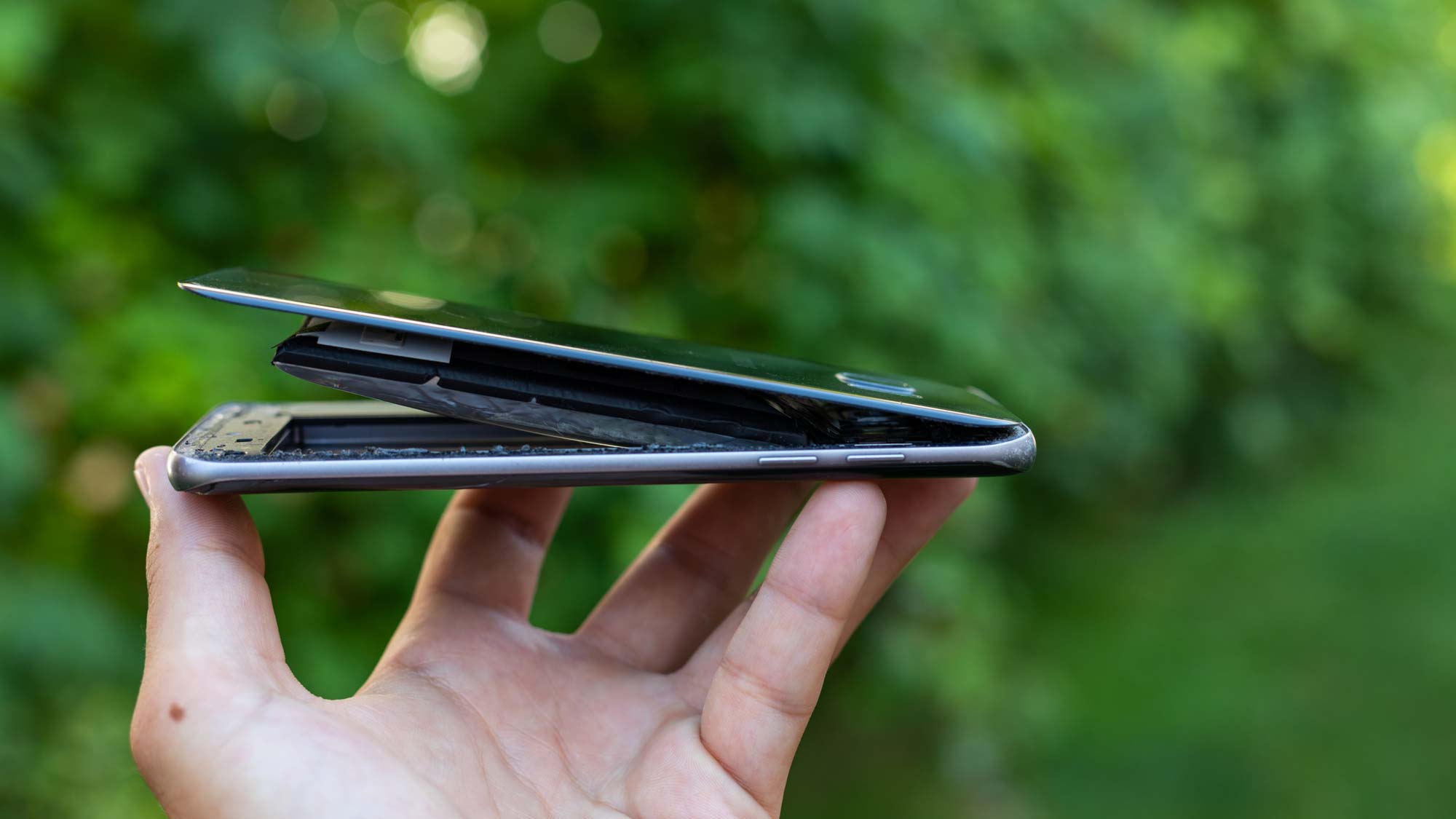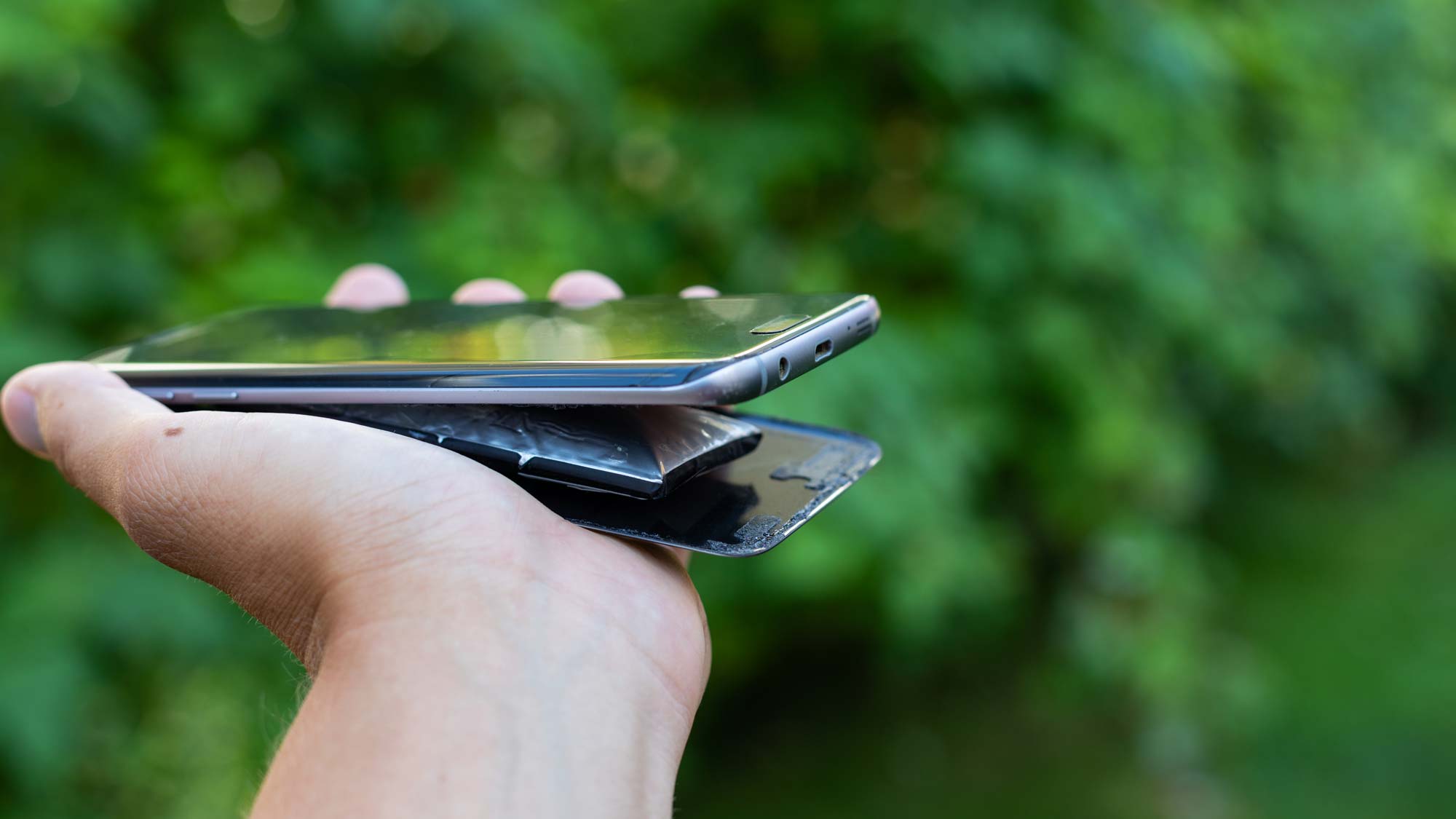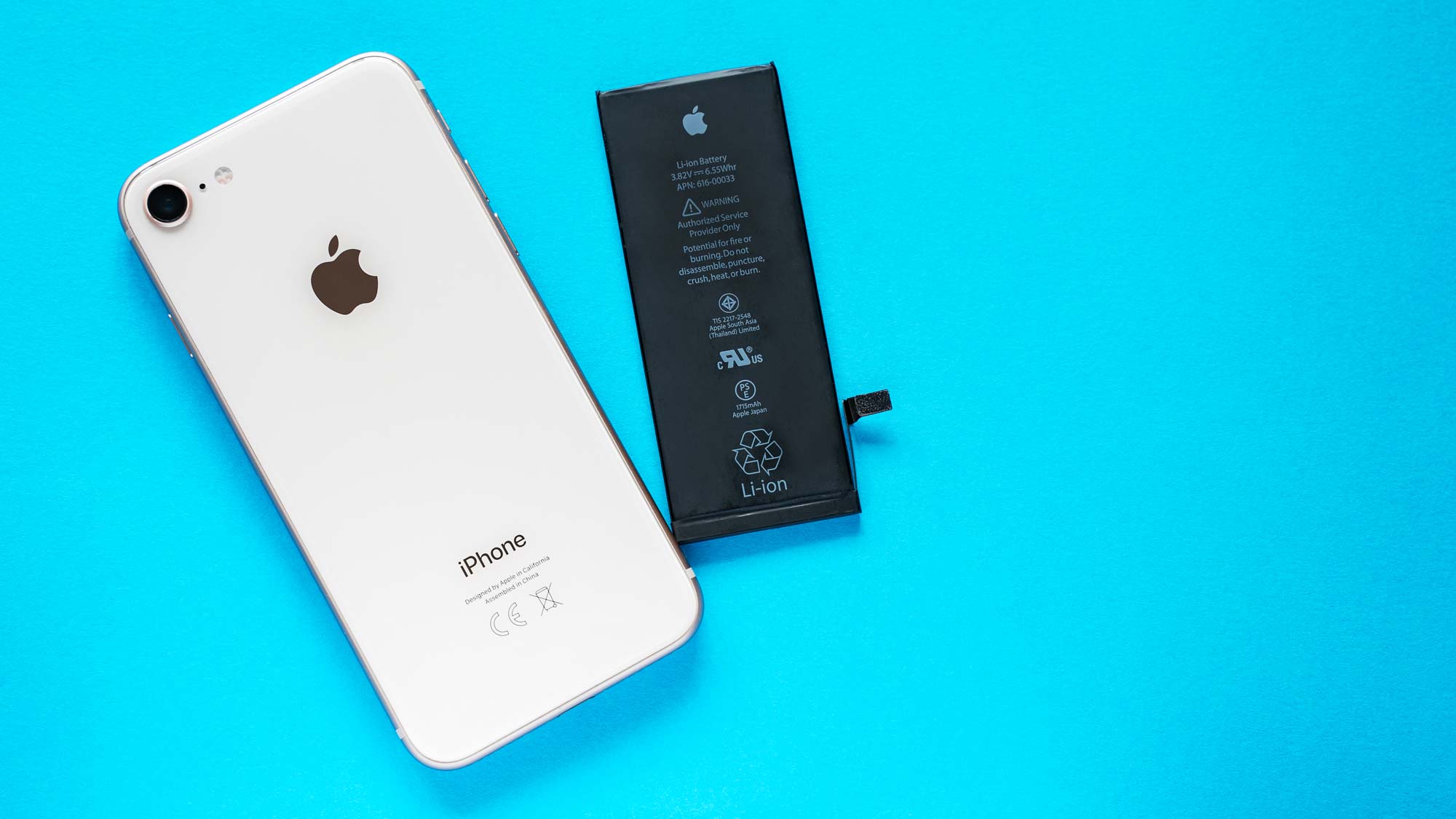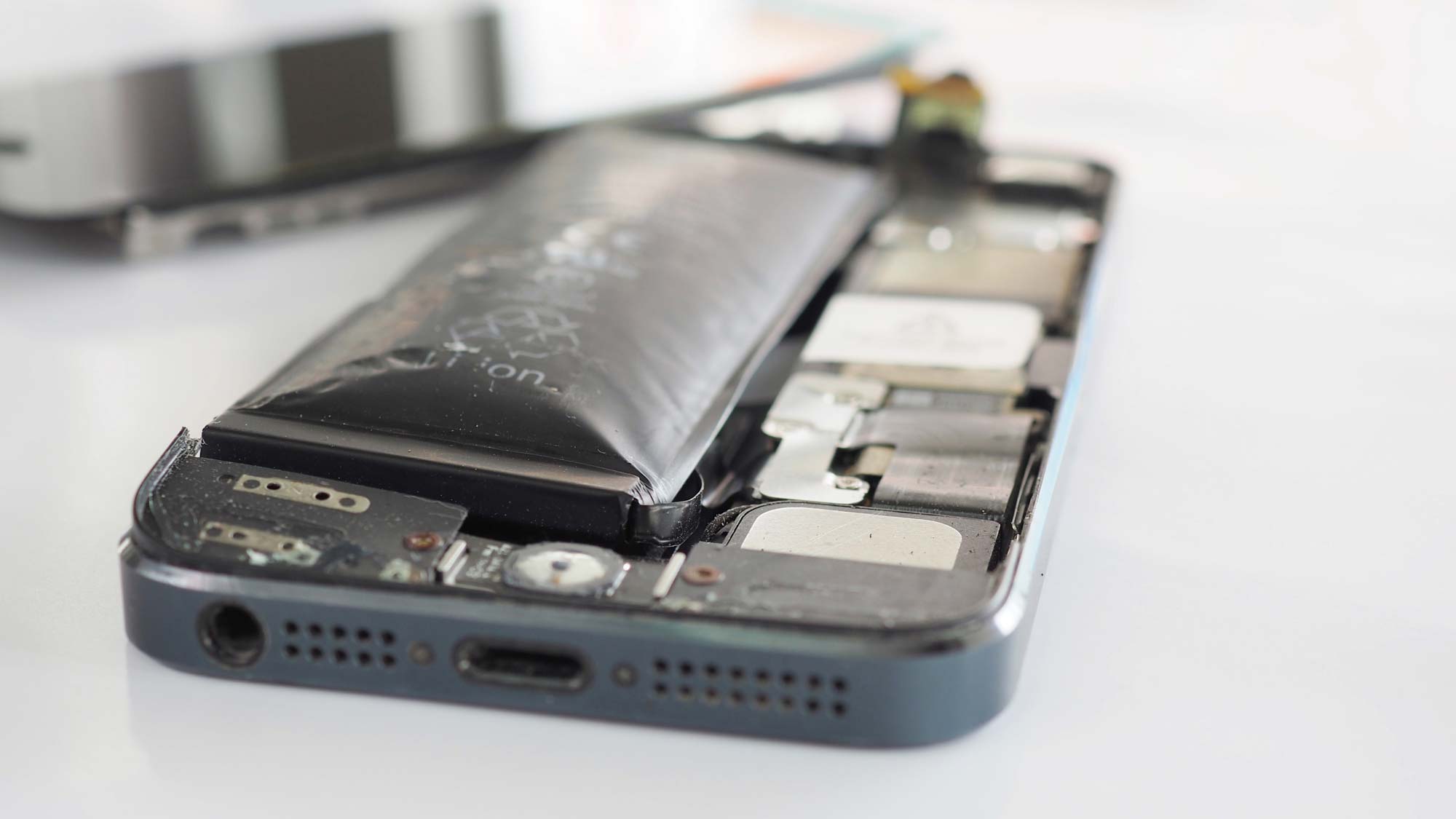What to Do If Your Smartphone’s Battery Is Swollen
If your smartphone’s battery is swollen, you should get it repaired ASAP. Here are a few options for doing so.

Seeing your smartphone suddenly balloon because of a swollen battery can be alarming, and it can be serious.
I take pretty good care of my smartphone, a Moto Z2 Play, so when I noticed a little loose adhesive between the screen and the housing last month, I didn’t think too much of it. That phone has been with me all around the world, and I’ve subjected it to the rigors of city life on a daily basis. A little wear and tear is expected after two years; a pristine phone is a phone that hasn’t been used.
But then, the Z2’s screen entirely pulled away from the housing, exposing the phone’s innards to the elements. My instincts, honed by many years of experience as a tech journalist, suggested that, perhaps, there was something wrong.
The culprit will be familiar to anyone who’s spent some time around old phones: a swollen battery. Lithium-ion batteries are excellent for storing juice and powering modern tech (they’re a far sight better than the nickel-cadmium batteries of yesteryear), but they come with their own set of drawbacks, too. If you suspect that your smartphone’s battery has expanded beyond its intended dimensions, you need to act quickly. Not only is your tech at risk, your health might be, too.
How to handle a swollen battery
The first thing you should do with a swollen battery is to run your phone’s charge down (keeping an eye on the device the whole time), then put it in a cool, dry place while you evaluate your next options.

By way of disclaimer, I can only speak from my own experience as the owner of a Motorola phone with a Verizon Wireless plan. But any manufacturer and wireless carrier should provide similar services to what's described below, so you should have most of the same options at your disposal.
Contact the manufacturer
The first thing I did was to see whether my phone’s manufacturer could solve the problem. I tweeted at the Motorola support account, where a customer-service rep gave me some good advice. My product was out of warranty, but Motorola could still potentially fix it for a price. I filled out a few forms on the website, and learned that Motorola could indeed fix or replace the phone for a $120 fee. It seemed a little steep, since you can get a perfectly good new phone for about $200. But the company could have just washed its hands of an out-of-warranty device entirely — your phone manufacturer’s approach may vary.
Separately, I contacted Motorola’s corporate office to see whether this issue happens frequently, and what course of action the company recommends when it does occur. We will update this piece once we hear back from them.
Call a repair shop
From the Motorola website, I also learned that the company has dozens of authorized repair shops all across the country. While just about any phone repair shop can swap out a battery, I felt a little better about entrusting my device to a repairman who had Motorola’s blessing.
Unfortunately, New York City is a bit of a dead-zone for Motorola repair shops, so I had to call a technician in Springfield, NJ. He said that he could perform the repair within about an hour, and it’d cost $100. Not a bad price — although it’d cost some time and money to get out there. This won’t be a problem if your phone manufacturer offers something similar close to where you live, though.
Finally, a coworker recommended a general repair shop near where I live; I figured it was worth calling for an estimate. While this facility didn’t have Motorola’s official stamp of approval, the technician promised that he would get an official original-equipment manufacturer battery and repair the device in three to five business days for $80. So far, it’s the best offer I’ve had — but ultimately, not the cheapest.
Do it yourself
An official battery for the Z2 play costs about $30; a new set of adhesive costs about $5. With shipping, I could conceivably effect repairs on my phone for about $40. However, as with a lot of DIY repairs, there are hidden costs, too. In addition to my time (the process takes between one and two hours), I’d also need a handful of tools that I don’t have handy, like a heat gun, a stiff plastic card (old credit cards bend too easily to pry anything), and a spudger.
I’m of two minds about DIY battery repairs. On the one hand, everyone should have a rough idea of how his or her phone works, and replacing a battery is a pretty simple fix, even for a layperson. On the other hand, once you take tools and labor costs into consideration, you’re not really saving that much money, and it’s not a “fun” process, by any means.
To split the difference, I’ll say this: If you want to replace a battery yourself, there’s no reason why you can’t do so — especially on older devices, where voiding the warranty is not an issue. And if you don’t want to make your own repairs, there’s no compelling reason why you should. If you decide to go the DIY route, though, be very careful when you remove the battery. Just clear the area right away if you smell anything foul, or if the battery starts to get hot. Having a metal bucket handy in case the device emits smoke isn't the worst idea, either.
Why do phone batteries swell?
Like a lot of things in life, the reason why phone batteries swell comes down to chemistry. Tech repair site iFixit provides a smart overview, but it basically boils down to stoichiometry. Lithium-ion batteries rely on a chemical reaction to charge. As you may remember from high school chemistry, if a chemical reaction does not fully consume all available reagents, it will create byproducts instead — and sometimes those byproducts are undesirable.

As such, if you charge a faulty lithium-ion battery, the process generates gas rather than simply charging. This gas builds up over time, and since batteries are hermetically sealed, they expand rather than vent.
Perform this process over and over on a faulty battery, and you’ll get more and more gas. That’s why my phone went from a hairline crack to pushing the screen right out of the housing. And if you keep charging and charging, the battery will eventually burst — and potentially explode. That’s what happened with the Samsung Galaxy Note 7, if you remember that whole debacle, in 2016.

I don’t want to give the impression that a phone with a swollen battery is a ticking time bomb. In fact, the odds are against it on a charge-by-charge basis. But if you continue using that damaged device indefinitely, you’re looking at a burst battery venting some very unpleasant gases, at best — and, at worst, if you keep your phone in your pocket, a small fire right next to body parts that don't react well to flames.
Bottom line
To summarize: If your battery is swollen, stop using your phone ASAP. Let the charge run down, then investigate your repair options. You can contact your manufacturer, use a local repair shop, or replace the battery yourself. Expect to spend somewhere between $50 and $150, depending on how much shopping around you plan to do.
A swollen battery is a major inconvenience, and a potential health hazard. But you simply can’t fight chemistry. Metal oxidizes, and when it does, it creates a gaseous byproduct. You can take the proper precautions — or you can get burned.
Sign up to get the BEST of Tom's Guide direct to your inbox.
Get instant access to breaking news, the hottest reviews, great deals and helpful tips.
Marshall Honorof is a senior editor for Tom's Guide, overseeing the site's coverage of gaming hardware and software. He comes from a science writing background, having studied paleomammalogy, biological anthropology, and the history of science and technology. After hours, you can find him practicing taekwondo or doing deep dives on classic sci-fi.

